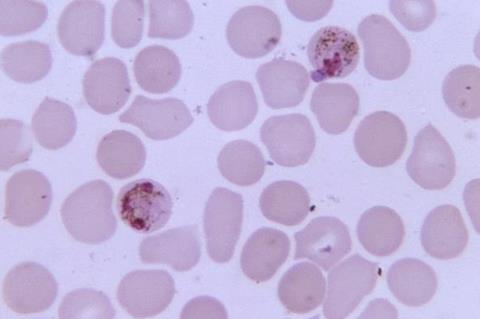For the first time ever, a molecule able to prevent the invasion of blood cells by parasites of the genus Plasmodium, responsible for malaria, has been identified and described by CNRS scientists, in collaboration with American and English colleagues.

Malaria is caused by apicomplexans of the genus Plasmodium. These parasites have a complex life cycle. Malarial symptoms in their hosts (i.e., headaches and anaemia) occur during phases of the parasites’ asexual reproduction, when, in the form of merozoites, they invade red blood cells.
Molecular motor
Their findings, which have just been published in Nature Communications, confirm the key role that myosin A - the ‘molecular motor’ of Plasmodium - plays in their infiltration of human hosts and penetration of their red blood cells, which triggers malarial attacks.
Myosin A is found in all forms adopted by Plasmodium during the course of an infection, which makes it a convenient target for an inhibitor.
That inhibitor is now known to exist: dubbed KNX-002, its structure and mode of binding have been determined using crystallography, and its effects tested in vitro on red blood cells. Its discovery paves the way for the development of a new class of antimalarials.







No comments yet